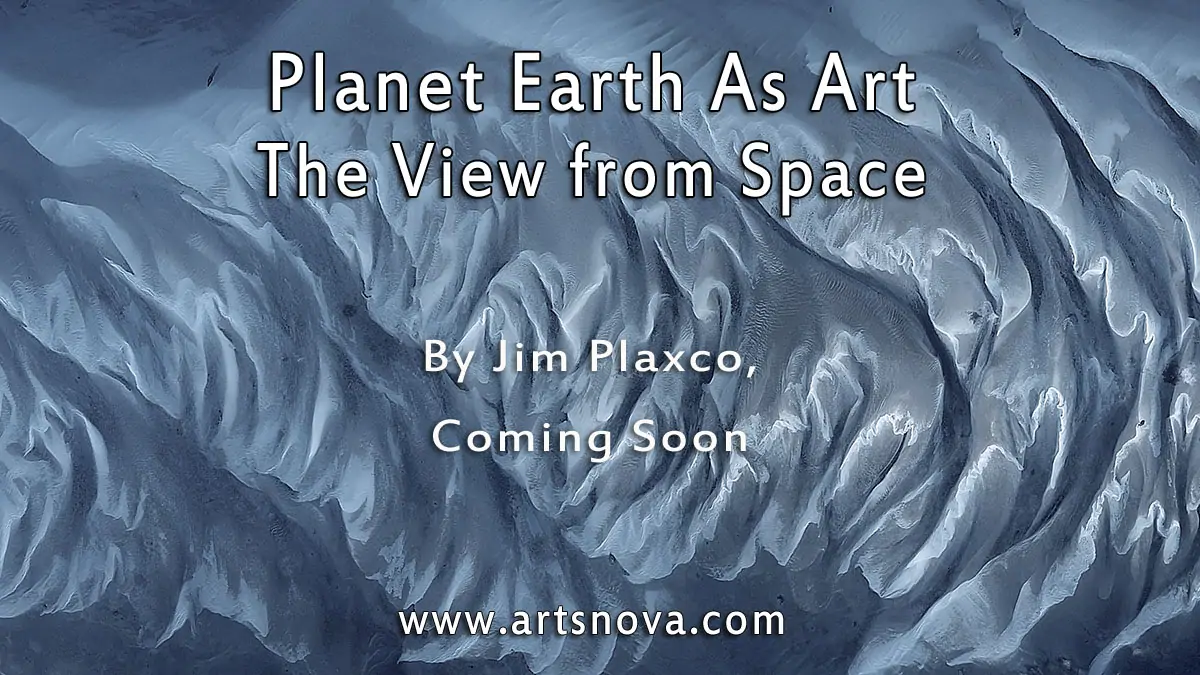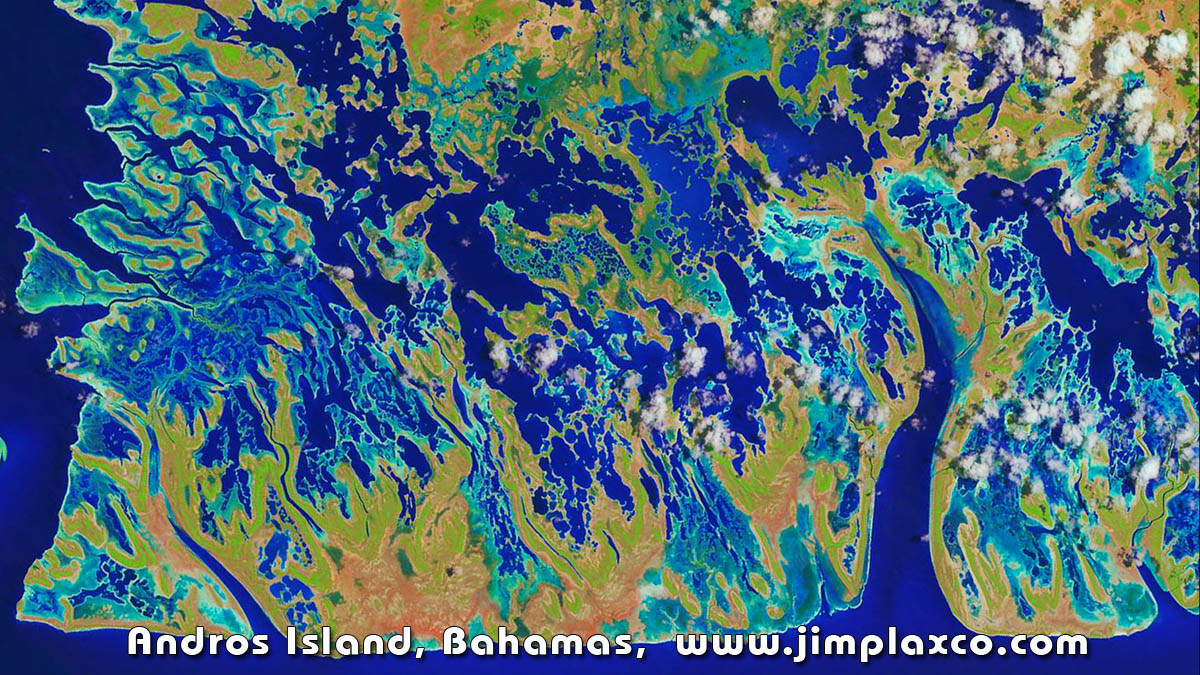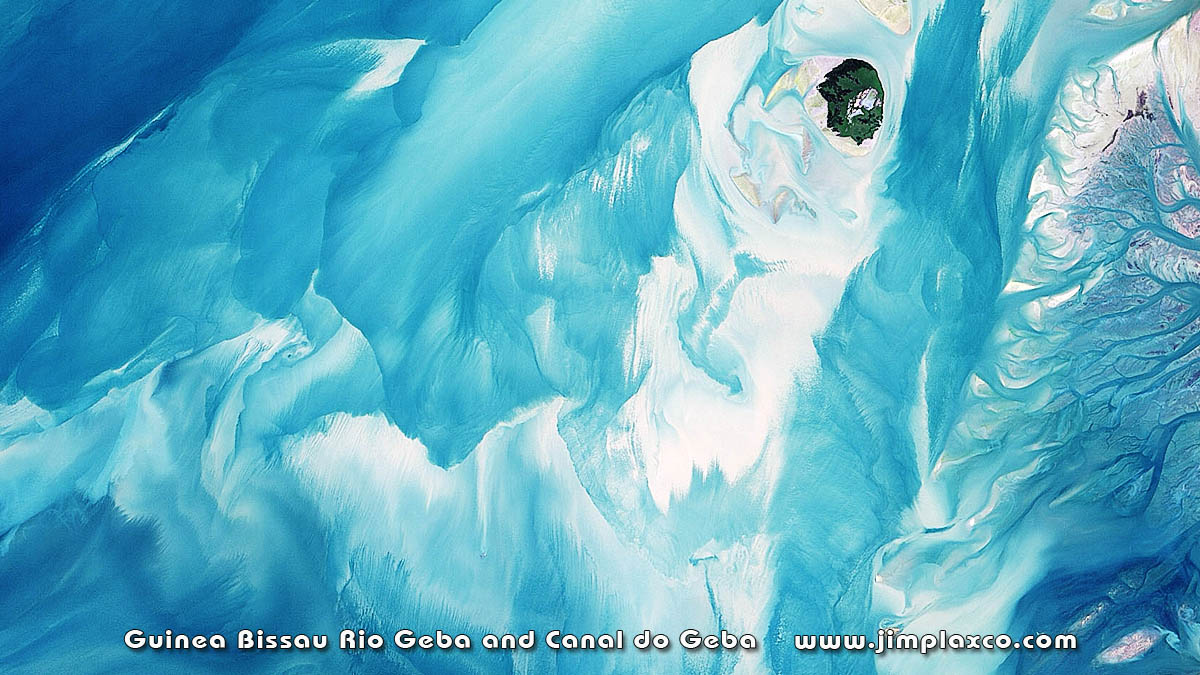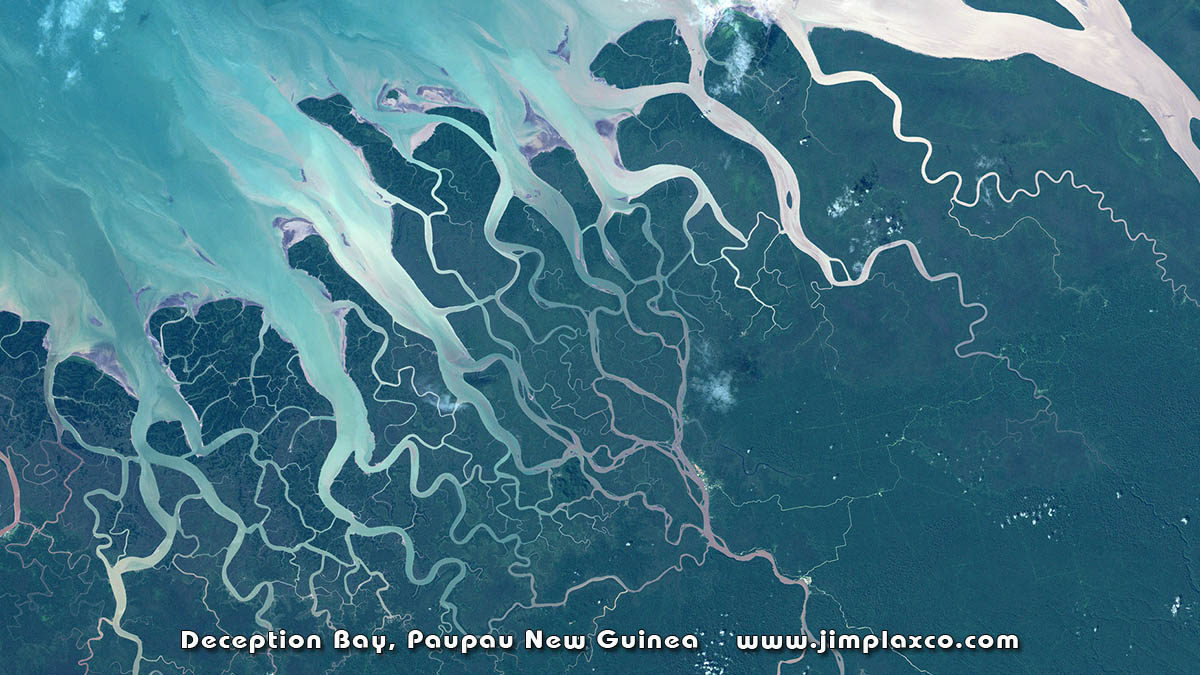Earth as Art - The View From Space Book Project

Shoals West of Eleuthera Island, Bahamas
Planet Earth as Art - The View from Space book looks at the Earth as an astronaut in space several hundred kilometers above the Earth's surface might view our home world. I ask you to consider the surface of the Earth as an immense canvas upon which nature has used nature's laws and vast amounts of time to create an ever-changing, living, colossal artwork.
In this book, I ask that you, the reader, look upon of our home planet as a massive work of abstract art when seen from LEO (Low Earth Orbit). I would further ask that you draw comparisons between the abstract artworks of any number of famous artists and what you see when viewing these images of Earth.
In considering this proposition, I will ask you to consider the nature of abstract art. The artist uses line, shape, value, and color to create a non-representational composition that has aesthetic value. Now consider nature. Nature creates representational art that when viewed from a certain perspective or frame is abstract in appearance and aesthetically appealing. Just as the artist makes deliberate choices in arranging the elements of a composition on his canvas, so to does nature. And by deliberate, I mean in terms of being bounded by the laws that govern the way the universe works.

Besides the aspect of conscious intent, there is another area in which nature's artwork differs from that of the human artist. That difference is that nature works on a much broader range of scales - both in terms of time and scope. In my Planet Earth As Art book, I present Earth as a work of art using both a specific scale and vantage point. That is, the Earth as viewed from an overhead distance of 700 kilometers using a camera system that can produce images with a resolution of 15 meters per pixel.

In fact, it is a constancy of scale that is one of the factors making Planet Earth as Art a unique book. Because every image in the book is at the same scale, the reader can flip back and forth between images and make direct comparisons between them. To help readers understand the scale of the landforms and features seen in the photographs, I include reference images of several cities from around the world. For example, if you have ever been to Grant Park in Chicago and can visualize its size as you walked around Buckingham Fountain, you can look at that photograph in the book and flip to a page that shows a seif dune in the Rub' al Khali desert in Saudi Arabia. Being able to do a direct comparison will help the reader to better comprehend the size of these sand dunes.

The three images shown above are examples of Landsat images that I have processed for use here. I must point out that these images are not shown at the same scale as the images which will be in the book. For example, the image of Andros Island, Bahamas is presented here at 30 meters per pixel.
This book project came about as a result of processing a sufficient number of Landsat satellite images and research to develop a formal presentation, which I still offer. You can learn more about the presentation at Planet Earth As Art: The View From Space Presentation.
“What beauty. I saw clouds and their light shadows on the distant dear earth.... The water looked like darkish, slightly gleaming spots.... When I watched the horizon, I saw the abrupt, contrasting transition from the earth's light-colored surface to the absolutely black sky. I enjoyed the rich color spectrum of the earth. It is surrounded by a light blue aureole that gradually darkens, becoming turquiose, dark blue, violet, and finally coal black.”
Yuri Gagarin, Cosmonaut and first man in space
